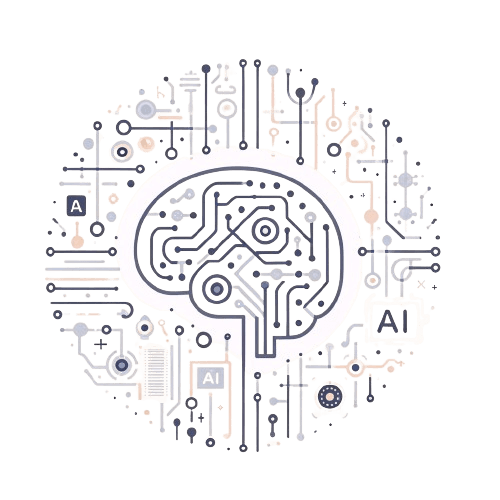Artificial Intelligence (AI) is no longer limited to data scientists and machine learning experts—JavaScript developers can also contribute to this evolving field. With the rise of AI frameworks and tools accessible through JavaScript, web developers can now embed smart functionalities directly into their applications. This blog post covers where JavaScript fits into the AI ecosystem, the technologies using JavaScript for AI/ML, and how developers can get started.
Where JavaScript Fits in the AI World
JavaScript’s strength lies in its ubiquity on the web, making it a powerful tool for client-side AI applications. While other languages like Python dominate the data-heavy side of AI development, JavaScript plays an essential role in bringing AI-powered features to the frontend. Developers can embed and run models directly in browsers, integrate APIs, and create interactive visualizations for AI data.
By leveraging TensorFlow.js and other libraries, JavaScript developers can implement real-time prediction models, visual search tools, and chatbots within web and mobile apps, bringing AI closer to users in interactive environments.
Technologies and Tools for AI/ML in JavaScript
Below are some key libraries and tools that make AI and machine learning (ML) accessible to JavaScript developers:
1. TensorFlow.js
- Overview: TensorFlow.js is the JavaScript version of Google’s popular TensorFlow library, allowing developers to run models directly in the browser or on Node.js servers.
- Capabilities:
- Load pre-trained models or train models from scratch in the browser.
- Perform tasks like image recognition, speech-to-text processing, or sentiment analysis without server dependency.
- Use Case: Implementing face recognition directly in a web app for real-time user authentication.
Learn More: TensorFlow.js
2. Brain.js
- Overview: A lightweight JavaScript library for neural networks, Brain.js makes it easy to create, train, and deploy networks on the client side or with Node.js.
- Capabilities:
- Train models to recognize patterns in time series data, simple text classifications, or user behavior.
- GPU support enhances the performance of AI models by using graphics hardware.
- Use Case: Training a recommendation system to suggest products based on user preferences.
3. Synaptic.js
- Overview: Synaptic.js provides an architecture-agnostic neural network library, supporting different kinds of neural networks such as feedforward and recurrent networks.
- Use Case: Creating bots or implementing machine learning-powered game elements in browser-based games.
4. Compromise NLP and NLP.js
- Overview: NLP.js is a natural language processing library that helps developers build chatbots, virtual assistants, and text analysis tools. Compromise NLP is another library optimized for parsing and understanding large datasets of unstructured text.
- Use Case: Building an automated customer service chatbot with real-time natural language understanding.
How JavaScript Developers Can Use AI in Applications
1. Building Web-Based AI Models
With TensorFlow.js and Brain.js, JavaScript developers can build AI models that run in browsers. For example:
- A real-time image classifier that identifies objects in a photo.
- A sentiment analysis tool for analyzing user feedback and displaying live results on a dashboard.
2. Creating AI Chatbots for Websites
Using NLP.js and Dialogflow, developers can build chatbots that handle customer inquiries intelligently. This enhances user interaction on websites and reduces the workload of support teams.
3. Interactive Data Visualizations
JavaScript’s data visualization libraries like D3.js can be combined with AI tools to create interactive dashboards. These dashboards show trends, predictions, and AI insights from models integrated into the frontend.
Why Use JavaScript for AI?
While JavaScript is not typically used for heavy model training (where Python or R are preferred), it shines in:
- Real-time interactions: AI models run in the browser without needing to send data to a server.
- Privacy: Running models on the client-side ensures that user data stays on the device, improving privacy.
- Cross-platform development: With frameworks like React Native, developers can implement AI across both web and mobile applications.
1. Real-Time AI Execution in Browsers
JavaScript’s ability to execute machine learning models directly in browsers using TensorFlow.js makes it ideal for real-time AI applications. This allows developers to build interactive and responsive user interfaces that react instantly to predictions, without server interaction.
- Use Cases:
- Face detection for user login or photo apps
- Real-time translation in chat interfaces
- Predictive search inputs that provide suggestions based on user behavior
Advantages:
- No network latency: Since the models run locally, users experience faster responses.
- Offline capability: Applications can perform tasks like object detection without internet access.
- Privacy-first approach: User data is not transmitted to a server, enhancing compliance with privacy laws.
Frameworks Used:
- TensorFlow.js – For deploying models directly in the browser.
- Synaptic.js – Useful for lightweight neural network creation.
2. Privacy and Security Benefits
Running AI models on the client-side ensures sensitive data stays on the user’s device. This helps in adhering to privacy regulations such as GDPR and CCPA, which require minimal exposure of personal data to external servers.
- Use Case:
- A speech-to-text application processes voice input locally, ensuring the user’s voice data is not sent to third-party servers.
- Health tracking apps use locally stored AI models to predict trends without sharing personal health data.
Advantages:
- Enhanced privacy: Reduces the risk of data breaches by keeping data on the user’s device.
- Compliance-ready: Meets privacy laws by minimizing data transmission.
Relevant Technologies:
- Brain.js – Allows the deployment of lightweight neural networks on browsers or Node.js.
- TensorFlow.js – For executing more complex AI tasks on the client side.
3. Cross-Platform AI Development with JavaScript
With JavaScript frameworks like React Native, developers can use AI models across web and mobile platforms. This approach allows for seamless integration of machine learning models in cross-platform applications, enabling unified AI-powered experiences.
- Use Case:
- A product recommendation engine that provides suggestions on both the web and mobile versions of an app.
- Voice assistants that offer consistent behavior across platforms.
Advantages:
- Code reuse: Develop AI once and deploy across multiple platforms.
- Unified experience: Ensure consistent AI-driven functionality on web and mobile apps.
Frameworks Used:
- React Native – To build mobile apps using JavaScript.
- TensorFlow.js + React – For adding AI to web apps with React components.
4. Natural Language Processing with JavaScript
JavaScript libraries such as NLP.js and Compromise NLP provide natural language understanding capabilities for chatbots, virtual assistants, and sentiment analysis tools. These libraries enable developers to build AI-powered conversational agents that run on the web.
- Use Case:
- A customer service chatbot embedded in a website to handle inquiries in real-time.
- Sentiment analysis on product reviews to extract customer feedback trends.
Advantages:
- Easy integration with chatbots: Libraries like NLP.js simplify the creation of conversational agents.
- Real-time text analysis: Perform NLP tasks in browsers without needing backend services.
Technologies Used:
- NLP.js – For developing chatbots and virtual assistants.
- Compromise NLP – For lightweight text parsing and sentiment analysis.
5. Backend AI Integration with Node.js
While JavaScript is not suitable for training large models, Node.js serves as an efficient backend to deploy AI models and orchestrate API calls. JavaScript developers can leverage pre-trained models from platforms like Google Cloud AI or IBM Watson via Node.js, enabling them to focus on application logic and integration.
- Use Case:
- A recommendation system for an e-commerce site that fetches predictions from a cloud-hosted model.
- A chatbot using Dialogflow integrates with a Node.js backend to provide intelligent customer support.
Advantages:
- Easy integration with AI APIs: Node.js simplifies interaction with external AI services.
- Lightweight deployment: AI models hosted on the cloud can be accessed without the need for complex backend infrastructure.
Technologies Used:
- Node.js – Backend framework for building scalable APIs.
- Google Cloud AI APIs – For pre-trained AI models that developers can integrate easily.
6. Interactive Data Visualizations for AI Insights
Data visualization is essential for presenting AI predictions and insights. JavaScript libraries such as D3.js and Chart.js help create interactive dashboards that visualize AI data in meaningful ways. Developers can use these libraries to plot trends, forecasts, and predictions based on AI-generated data.
- Use Case:
- A dashboard showing AI-based sales forecasts and trends.
- Visualizing user behavior predictions to understand customer preferences.
Advantages:
- User-friendly insights: Visualization helps non-technical users interpret AI results.
- Dynamic updates: Dashboards can be updated in real-time as new data comes in.
Technologies Used:
- D3.js – For building interactive and complex visualizations.
- Chart.js – For simple, responsive charts and graphs.
Best Practices for AI Development with JavaScript
- Use Pre-Trained Models: Loading pre-trained models saves time and resources. Libraries like TensorFlow.js offer many pre-trained models (e.g., MobileNet for image recognition).
- Optimize Performance: Since JavaScript runs in a browser, optimize models for speed by reducing model size or offloading work to the GPU where possible.
- Monitor User Interactions: Track how users interact with AI-powered features. This data can be valuable for improving model accuracy and fine-tuning user experiences.
Conclusion
JavaScript is proving to be an essential part of the AI ecosystem by bridging the gap between AI models and user interfaces. Technologies like TensorFlow.js, Brain.js, and NLP.js enable web developers to embed smart functionalities without diving deep into complex AI algorithms. With JavaScript, developers can bring AI-powered features directly to users’ browsers, making applications more interactive, responsive, and secure. As the field evolves, the integration of AI into web technologies will open even more opportunities for JavaScript developers to build innovative, smart applications.
Ready to Get Started? Explore the TensorFlow.js tutorials and build your first browser-based machine learning model today!

